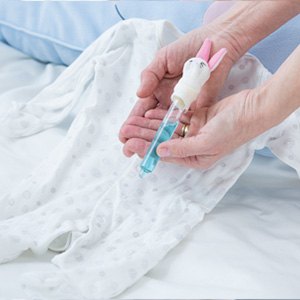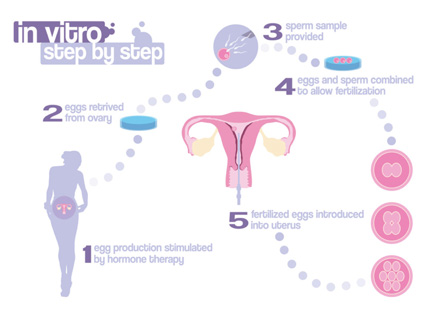
Test Tube Baby
If you are wondering what is test tube baby and IVF, whether both the terms are related, let us try to understand them in detail. Test tube baby is a term that refers to a child that is conceived outside the women’s body by a scientific process known as In-Vitro fertilization or IVF treatment. This entire process is done in a laboratory. In this process the eggs are taken from the mother’s ovary and fertilised by the sperms from the father.
The fertilised egg is cultured for 2–6 days and allowed to divided 2-4 times inside a test tube (hence the name test tube baby) These eggs are then returned back to the mother’s uterus where it can be developed normally, this is done with the intention to establish a successful pregnancy.
Test tube baby procedure has greatly helped women having infertility problems that are untreatable to give birth to healthy babies.
The first Test tube baby
The test tube baby procedure was made possible by scientist Robert Edwards and gynecologist Patrick Steptoe in 1978 when the first test tube baby, Louise Brown was born in England. In 2010, Robert G. Edwards was conferred the Nobel Prize in Physiology or Medicine for developing the IVF treatment.
Now, IVF treatment has given many couples who are suffering from fertility problems a hope of becoming a parent. Since the first test tube baby in 1978 to recent times there have been millions of children who are born with the help of IVF treatment. Now a days test tube baby process is widely followed through out the world,especially IVF in India is in great demand.
THE PROCESS OF IVF

Now let us understand the steps involved in test tube baby process. The steps for test tube baby break in four phases. People planning for IVF treatment should know the test tube baby procedure in depth.
Step 1 - Egg stimulation:
Patient is given fertility medications to stimulate the production of egg.
To increase the success rate of the treatment multiple eggs are needed. Usually it not advisable to rely on single egg for which the doctor gives fertility drug to increase the production of eggs.
Depending upon the patient's response medications are advised. There are various protocols for egg stimulation.
Egg stimulation is guided by Transvaginal ultrasound to examine ovaries, blood samples and to determine the level of hormones.
Step 2 - Egg Retrieval:
Imaging ultra sound is used to retain ovarian follicles with the help of hollow needle. Retrieval of egg is followed with minor surgery
Complete procedure takes about half an hour. The follicular fluids are carefully seen by embryologist to trace the proof of available eggs.
After the entire procedure eggs are preserved in incubator till insemination.
Step 3 - Culture of Fertilization and Embryo:
For insemination male sperm sample is collected
Eggs are mixed with the sperms and stored in laboratory
If there are chances of low probability of fertilization, ICSI can be considered.
To enable fertilization single sperm is infused in the egg
Fertilized eggs are considered as embryos only after the confirmation by an embryologist.
Step 4 - Transfer of egg and quality of Embryo:
Embryo transfer is the quickest method done in overall treatment
Embryo is assessed on the basis of age and quality.
Doctor is asked to keep the full history of the patient starting from age to previous treatment, but the end decision is taken by patient itself
Under normal situation, doctor suggests transferring single embryo with blastocyst and rest of them are preserved. Transfer of one high quality embryo decreases the risk of triplets or twins.
During transferring, doctor inserts Cather and pushes pre determined embryos in the female uterus
this method is done under guidance of ultra sound. Patient is advised to take rest for 5- 6 hours after it
After this method, pregnancy test is conducted to know the exact situation.
Booking a visit
© 2017 Pushpaa Hospital

